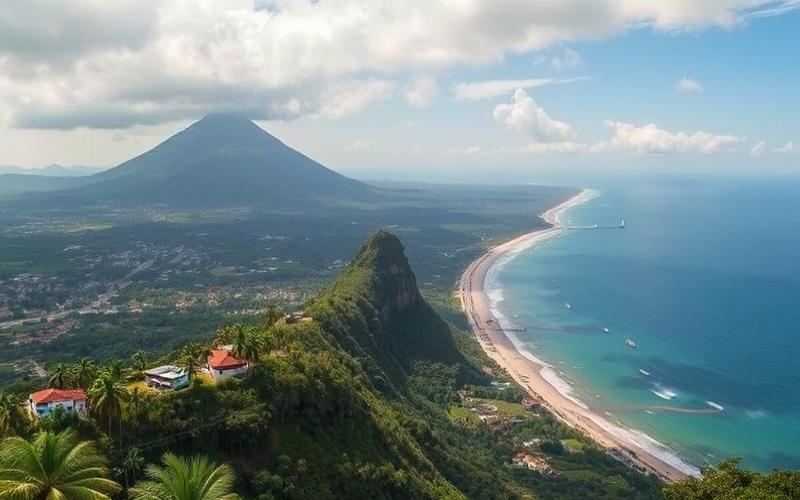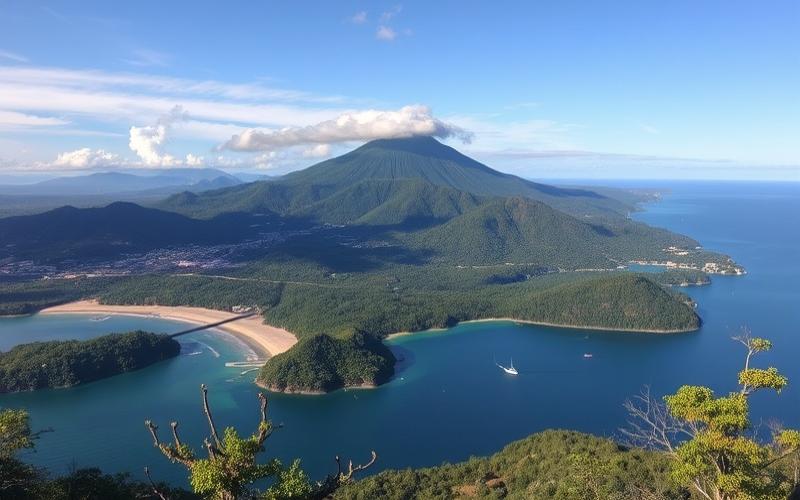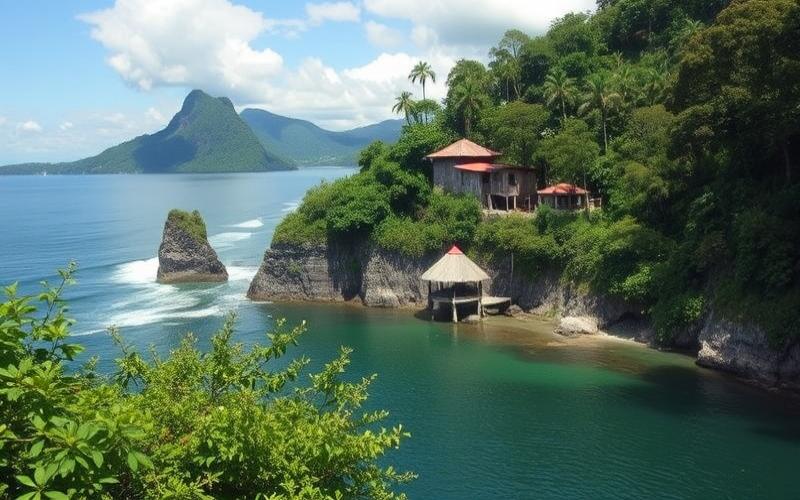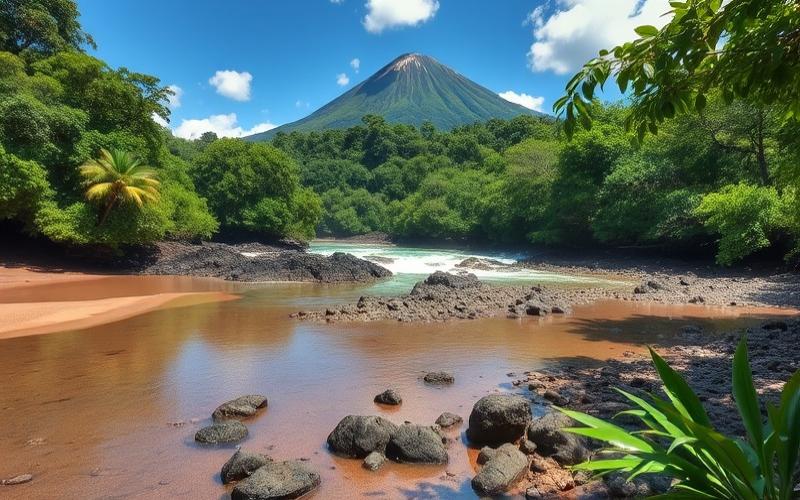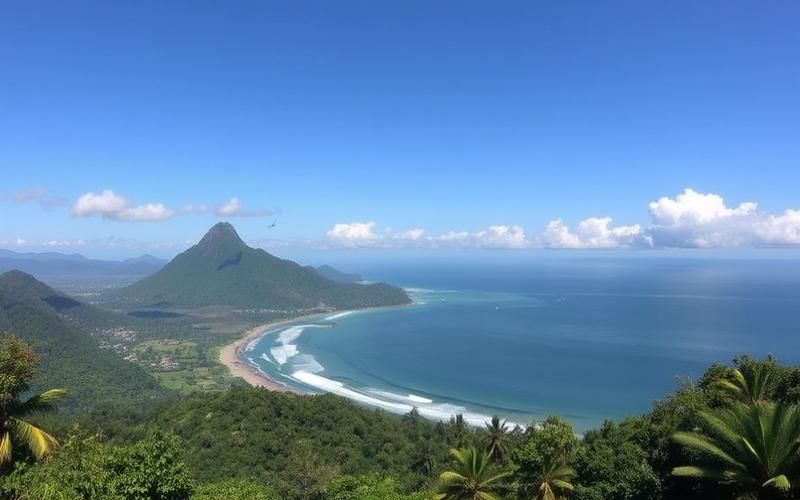
 Published on and written by Cyril Jarnias
Published on and written by Cyril Jarnias
Investing in Real Estate in Costa Rica
Investing in real estate in Costa Rica attracts numerous buyers each year, drawn by the paradise-like landscapes and promising market. However, the rise of digital technologies has led to a deceptive practice that traps many potential buyers: retouched photos.
These flattering images, often edited to enhance properties, can hide crucial flaws, turning a dream transaction into a costly nightmare.
As Costa Rica continues to position itself as a prime destination for real estate acquisition, it becomes essential for future buyers to master the art of detecting these digital illusions to make an informed investment.
Understanding the Importance of Deciphering Real Estate Listings
Knowing how to decipher real estate listings is crucial for potential buyers, especially in the Costa Rican market, where the diversity of properties and lack of strict regulations on listing presentation can lead to disappointments or fraud.
Challenges Faced by Buyers with Retouched Photos:
- Real estate photos are systematically optimized to enhance the property, sometimes to the point of altering reality (adding light, removing defects, changing the color of the sky or walls).
- Artificial intelligence retouching can make a property much more attractive than it actually is, hiding major flaws or giving a misleading impression of space and brightness.
- Buyers risk getting a false idea of the property and being disappointed during the visit, or worse, encountering a fraudulent listing where the property doesn’t match the images at all.
Specific Risks in the Costa Rican Market:
- Presence of unscrupulous sellers or poorly regulated platforms.
- Photos taken during different seasons or under exceptional conditions (for example, during the dry season when the property may be flood-prone during the rainy season).
- Difficulty for foreign buyers to verify the property’s reality on-site.
Tools and Skills for a More Objective Evaluation:
- Critical Photo Analysis: Spot signs of excessive retouching (inconsistent shadows, oversaturated colors, distorted perspectives).
- Reviewing Floor Plans: Compare the actual room layout with photos to detect potential concealment of problematic spaces.
- Remote Virtual Tours: Request unedited videos or participate in live video calls to tour the property without filters.
- Requesting Additional Information: Demand photos taken from different angles, at various times of the day, or exterior and neighborhood views.
- Verification with a Local Professional: Engage a real estate agent or independent expert for an on-site visit or objective report.
Best Practices for Deciphering a Real Estate Listing:
- Read the text description carefully to spot inconsistencies or omissions.
- Cross-reference photos with floor plan and location information.
- Check the consistency of elements present in the photos (furniture, views, neighborhood).
- Look for reviews or testimonials from previous tenants or owners.
| Potential Pitfall | Tool/Skill to Protect Yourself |
|---|---|
| Overly Perfect Photos | Critical Analysis, Request Raw Videos |
| Lack of Floor Plan | Demand Floor Plans and Compare with Photos |
| Vague Description | Ask for Clarifications, Verify On-Site |
| Excessive Retouching | Use Image Analysis Tools, AI |
Attention to detail and a critical reading of listings help avoid traps, prevent disappointments during visits, and protect against fraud.
By adopting a methodical approach and using the right tools, buyers maximize their chances of success in a market where images can be misleading and caution is advised.
Good to Know:
In Costa Rica’s dynamic real estate market, knowing how to decipher listings is crucial to avoid disappointments related to retouched photos, which can embellish a property’s reality. Potential buyers must be vigilant, as these practices can hide significant flaws or exaggerate features, leading to regrettable purchases. To navigate this market cautiously, it’s advisable to use tools such as detailed floor plans and virtual tours, which offer a more faithful perspective of properties. Developing critical analysis skills helps detect inconsistencies in descriptions and avoid potential fraud. Looking for details like material composition in descriptions or comparing prices to the local average can also help better evaluate a listing and ensure that the purchase truly meets expectations.
How to Avoid Real Estate Scams in Costa Rica
Practical Tips to Identify Potentially Retouched Photos in Costa Rican Real Estate Listings:
- Careful Visual Analysis of Images
- Look for excessively saturated colors, an unnaturally blue sky, or overly uniform lighting.
- Notice the absence of minor flaws (stains, wear, irregularities) that are normally present in any real property.
- Be wary of inconsistent reflections in mirrors and windows or blurred objects in certain planes while the rest of the image is sharp.
- Comparison with Other Sources
- Compare the property’s photos on different listing sites or social media to detect notable differences. Significant variation may indicate heavy retouching or reuse of generic photos.
- Request Additional Verification
- Always ask to receive a real-time video of the property (e.g., via WhatsApp), which greatly limits the possibility of retouching.
- Prefer interactive virtual tours (live video conference) where you can ask to see specific details from different angles.
- In-Person Verification
- Always organize a physical visit if possible before any decision to compare your impressions with reality. Flagrant discrepancies between photos and reality often reveal abusive manipulation.
- Background Check and Professional Legitimacy
| Recommended Checks | Concrete Actions |
| Agent Research | Search the name on Google, professional social networks (LinkedIn), local specialized forums |
| Licenses & Affiliations | Verify registration with local real estate chambers such as CCCBR (Cámara Costarricense de Corredores de Bienes Raíces) |
| History | Ask how long they’ve been practicing and review their past listings/completed projects |
Common Red Flags in Suspicious Listings:
- Photos clearly from stock images or seen elsewhere
- Price significantly below market without rational explanation
- Systematic refusal to organize a quick physical visit
- Complete lack of precise information about the property or its location
Useful Local Resources in Case of Doubt:
- National associations like Consumidores Libres Costa Rica for free legal advice.
- Costa Rican Chamber of Real Estate Agents (CCCBR) to verify professional affiliation and report suspicious behavior.
- Local legal services specialized in real estate law to assist with complex procedures.
Key Takeaway:
⚠️ Vigilance against overly perfect images is essential. Always cross-reference multiple verification methods before any financial commitment to avoid disappointments related to photographic manipulation.
Good to Know:
To avoid real estate scams in Costa Rica, pay attention to retouched photos in listings: excessively bright images without visible flaws may indicate modifications. Compare photos with other sources like Google Maps or similar listings to verify consistency. Prioritize in-person visits or request videos and virtual tours to confirm the property’s actual condition. Before any transaction, conduct thorough research on the real estate agent by checking online reviews and membership in recognized associations, such as the Cámara Costarricense de Corredores de Bienes Raíces. Listings with vague information, abnormally low prices, or requests for immediate payment are red flags. In case of doubt, consult local resources, such as consumer protection associations or a specialized lawyer, for informed legal advice.
Tips for Verifying the Authenticity of a Real Estate Listing
Tips for Verifying the Authenticity of a Real Estate Listing in Costa Rica
- Compare Information Across Multiple Platforms
It’s essential to consult the listing on different real estate websites to identify inconsistencies regarding price, location, description, or photos. The same property listed at very different prices or with divergent descriptions should raise suspicion.
- Use Google Street View
Search the property’s address on Google Street View to verify:
- The actual existence of the property at the indicated location
- The match between the exterior environment and the photos published in the listing
- The consistency between the property’s apparent condition on Street View and the listing images
- Request Documentary Evidence
Before any commitment, demand authentic documents:
- Official property title (verifiable at the Registro Nacional)
- Property appraisal certificate
- Building permits and compliance certificates if recent work is mentioned
- Signed and notarized sales contract or purchase agreement
| Document to Request | Purpose of Verification |
|---|---|
| Property Title | Confirm the legal owner |
| Appraisal Certificate | Verify the actual value |
| Building Permit | Ensure the legality of work |
| Inspection Report | Assess the property’s technical condition |
- Visit the Property in Person or Request a Live Virtual Tour
- If possible, organize an on-site visit to verify the property’s reality and condition.
- If unable to travel, request a live virtual tour (real-time video, not just a recording). This allows you to:
- Validate the interior and exterior of the property
- Ask specific questions and request to see particular details
- Detect potential inconsistencies or attempts at concealment
- Verify the Agency’s or Seller’s Reputation
Before signing anything, research the professional:
- Check customer reviews on Google, expatriate forums, or social media
- Verify the agency’s presence on recognized platforms or with official associations (e.g., CCCBR)
- Ask for references and contact previous clients if possible
| Points to Verify About the Agency/Seller | Explanations |
|---|---|
| Online Reviews and Testimonials | Reliability and seriousness |
| Presence on Professional Platforms | Mark of professionalism |
| Official Accreditation | Limits scam risks |
:warning: Always cross-reference sources, demand official proof, and never rely solely on the seller’s word or photos.
Good to Know:
To verify the authenticity of a real estate listing in Costa Rica, it’s essential to cross-reference information across multiple platforms to detect potential inconsistencies. Use Google Street View to confirm the exterior environment and the accuracy of photos published in the listing. Systematically request documentary evidence such as a property title or real estate appraisal certificate to ensure the offer’s legitimacy. If possible, visit the property yourself or, if not, request a live virtual tour to validate the interior’s authenticity. Finally, research the real estate agency or seller by consulting other clients’ reviews or their presence on recognized professional platforms to avoid unpleasant surprises.
Virtual Tours: How to Ensure a Realistic Presentation
Virtual tours play an increasingly central role in Costa Rica’s real estate market, especially for international buyers who can’t always travel easily. They offer a practical solution for exploring properties remotely, helping to reduce travel costs and speed up the selection process.
Importance of Virtual Tours in Costa Rican Real Estate:
- Easy Access to Properties from abroad, essential in a market where many potential buyers reside outside the country.
- Time Savings: efficient initial screening without having to physically visit each property.
- Reduction of Unnecessary Visits, thus minimizing inconvenience for sellers and optimizing real estate agents’ work.
- Increased Transparency compared to simple photos, often retouched or advantageously framed. Virtual tours allow faithful and continuous immersion, reducing the risk of being deceived by staging.
Available Technologies for a Realistic Experience:
| Technology | Strengths | Examples |
|---|---|---|
| 360° Cameras | Immersive Panoramic View | Ricoh Theta, Insta360 |
| 3D Platforms | Smooth Navigation & Interactive Plans | Matterport |
| Augmented Reality | Addition of Contextual Information | Mobile Applications |
To guarantee authenticity in a virtual tour:
- Verify smooth transitions between rooms (avoid abrupt cuts or unrealistic jumps).
- Observe 360-degree image quality (absence of blurry or pixelated areas).
- Test interactivity: ability to freely choose your path rather than following a too restrictive predefined route.
Essential Technical Tips During a Real Estate Virtual Tour:
- Control Free Navigation
- Ensure you can explore all rooms and corners without artificial restrictions.
- Verify Dimensions
- Look for integrated tools that allow precise measurement of room sizes; compare with provided plans if possible.
- Assess the Property’s General Condition
- Use zoom on different elements (walls, floors, ceilings) to identify any visible defects not mentioned in the listing.
- Analyze Natural Lighting
- Note how brightness evolves in different parts of the home; this can reveal certain problems not perceptible in classic photos.
Elements to Check During a Virtual Tour:
- Quick Checklist:
- Smooth navigation between all areas
- Consistent high resolution
- Accessible measurement tools
- Clear view of important details (finishes, installations)
- No inaccessible or hidden areas
Key Takeaway
Even with advanced technology and a convincing immersive experience, it remains crucial — whenever possible — to combine this virtual exploration with a physical inspection. This notably allows:
- Confirming what was seen virtually,
- Fully appreciating the exterior environment,
- Spotting any elements not visible digitally (odors, ambient noises…),
in order to obtain a complete and accurate evaluation before any final decision.
Good to Know:
Virtual tours have become essential in Costa Rica’s real estate market, offering a often more reliable view of properties than retouched photos. They allow buyers to navigate through properties using immersive technologies like 360-degree images, where image quality and transition smoothness are crucial to avoid misleading manipulations. During a virtual tour, it’s important to control the ability to interact with the environment, verify exact room dimensions, and pay attention to the property’s general condition. Ensure the experience allows free navigation through the space to properly evaluate the property. However, it’s recommended to combine these tours with physical inspections for a complete and accurate evaluation. This dual approach guarantees buyers a more realistic picture, thus avoiding unpleasant surprises during acquisition.
Disclaimer: The information provided on this website is for informational purposes only and does not constitute financial, legal, or professional advice. We encourage you to consult qualified experts before making any investment, real estate, or expatriation decisions. Although we strive to maintain up-to-date and accurate information, we do not guarantee the completeness, accuracy, or timeliness of the proposed content. As investment and expatriation involve risks, we disclaim any liability for potential losses or damages arising from the use of this site. Your use of this site confirms your acceptance of these terms and your understanding of the associated risks.






